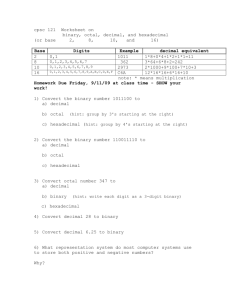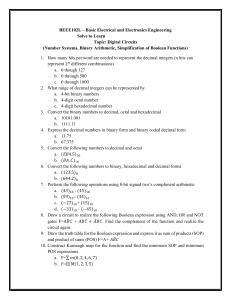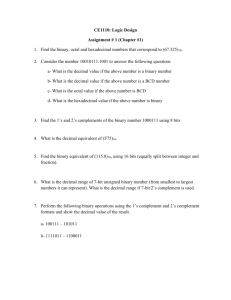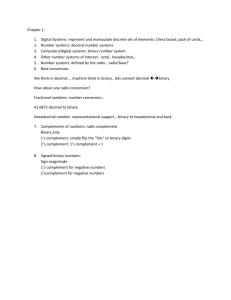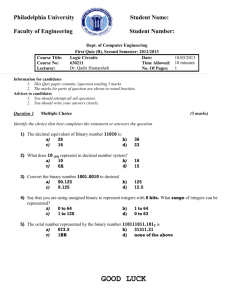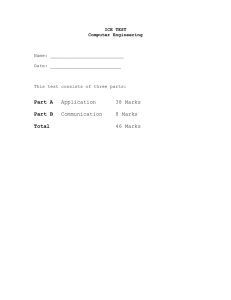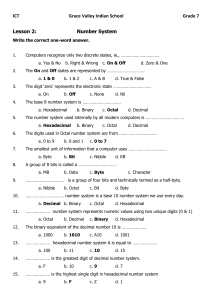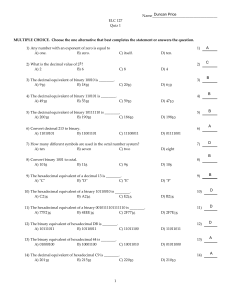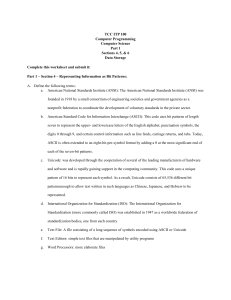Numbers Used in Digital Electronics
advertisement
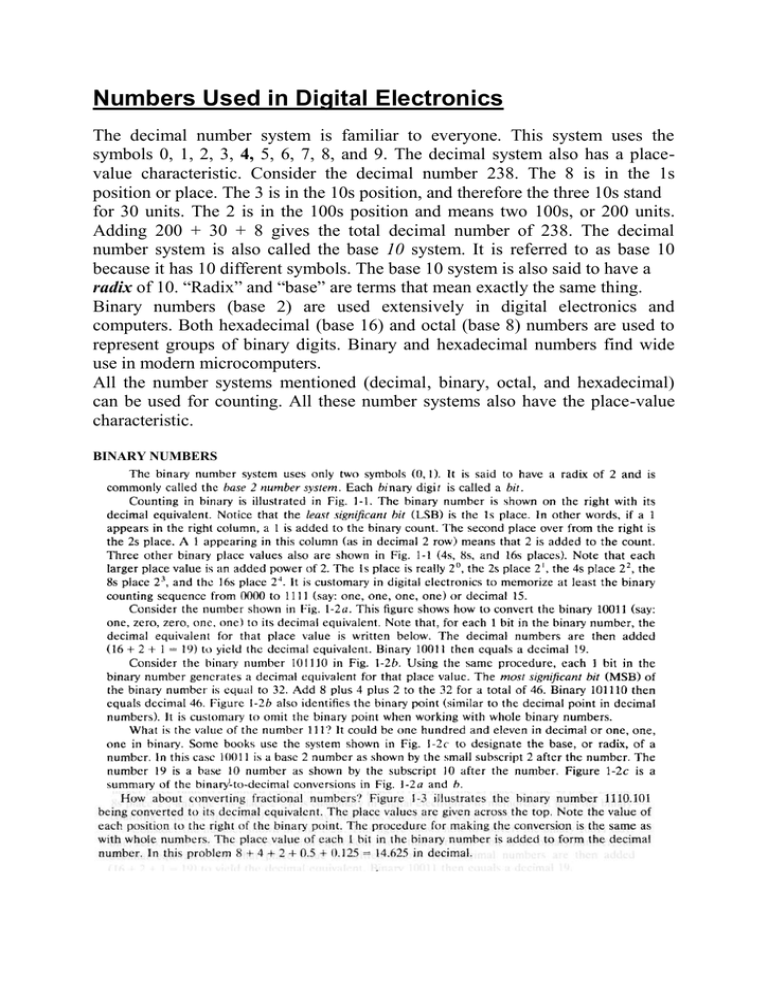
Numbers Used in Digital Electronics The decimal number system is familiar to everyone. This system uses the symbols 0, 1, 2, 3, 4, 5, 6, 7, 8, and 9. The decimal system also has a placevalue characteristic. Consider the decimal number 238. The 8 is in the 1s position or place. The 3 is in the 10s position, and therefore the three 10s stand for 30 units. The 2 is in the 100s position and means two 100s, or 200 units. Adding 200 + 30 + 8 gives the total decimal number of 238. The decimal number system is also called the base 10 system. It is referred to as base 10 because it has 10 different symbols. The base 10 system is also said to have a radix of 10. “Radix” and “base” are terms that mean exactly the same thing. Binary numbers (base 2) are used extensively in digital electronics and computers. Both hexadecimal (base 16) and octal (base 8) numbers are used to represent groups of binary digits. Binary and hexadecimal numbers find wide use in modern microcomputers. All the number systems mentioned (decimal, binary, octal, and hexadecimal) can be used for counting. All these number systems also have the place-value characteristic. BINARY NUMBERS

